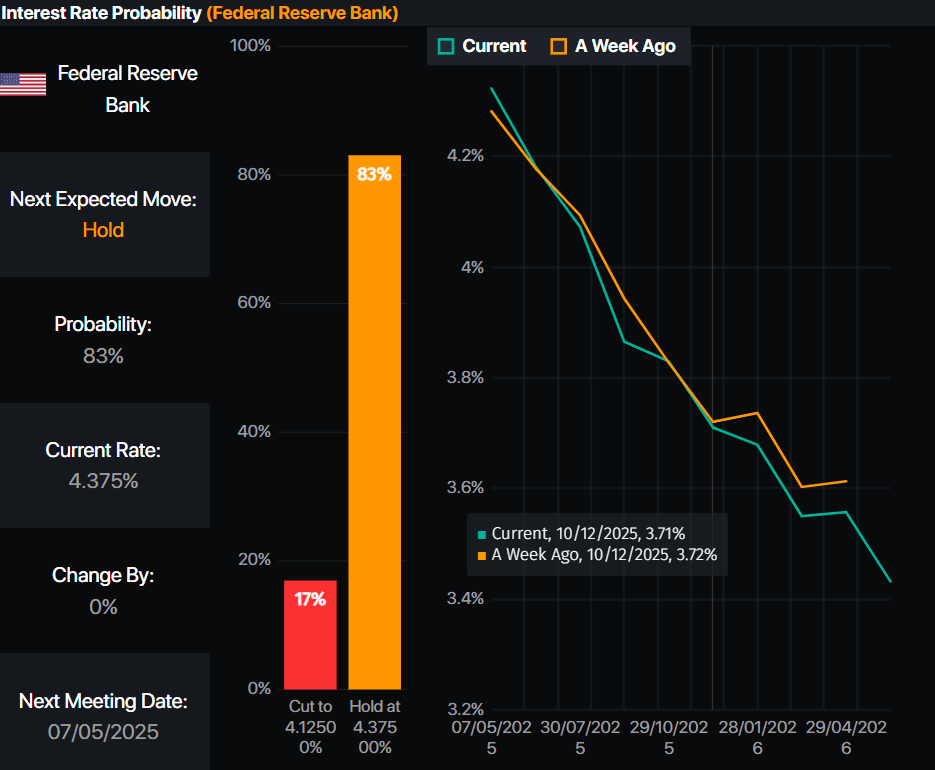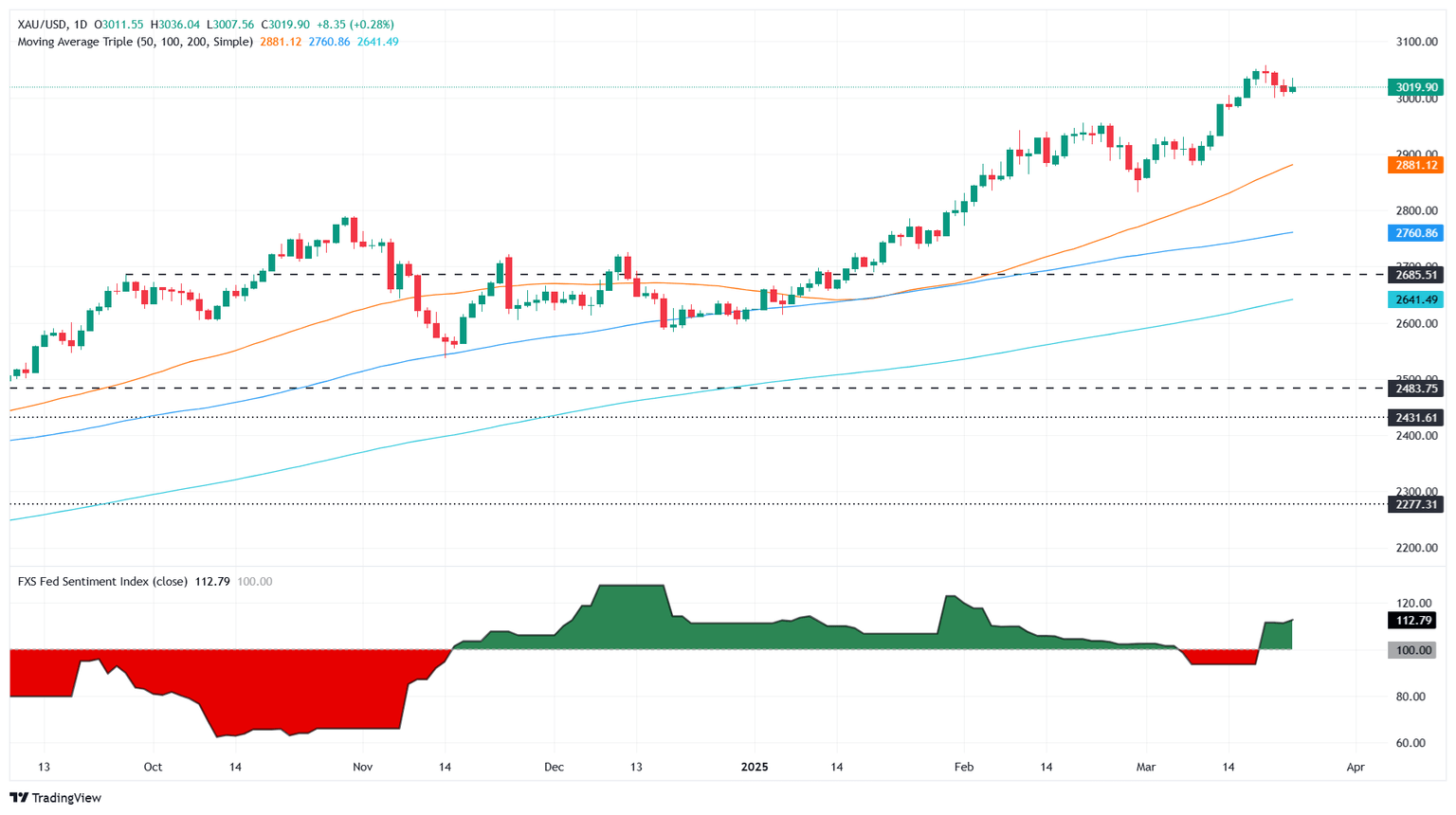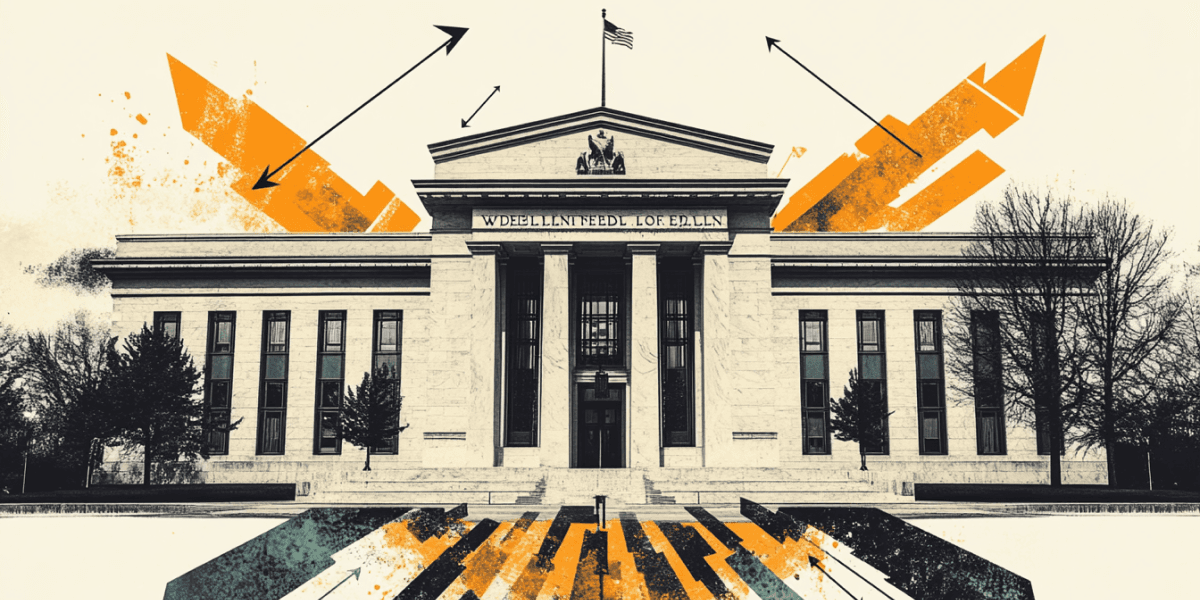Gold price shines brighter as US yields tumble
- Gold is up 0.26% as real yields slide and inflation expectations rise on trade policy worries.
- US Consumer Confidence hits 4-year low, boosting stagflation narrative and demand for safe-haven assets.
- Fed officials note reaccelerating goods inflation, adding to market doubts about near-term rate cuts.

Gold price advances on Tuesday as the US Dollar (USD) remains on the back foot and amid falling US real yields, which typically correlate inversely to bullion prices. An unexpected rise in inflation expectations, spurred by US trade policies, boosted demand for the yellow metal, which is gaining 0.26%, trading at $3,018.
The market mood is mixed, with US equity indices split between gainers and losers. US data revealed that Consumer Confidence fell to its lowest level in more than four years as households fear a future recession amid elevated inflation readings, according to the Conference Board (CB). This paints a stagflationary outlook.
Therefore, the yellow metal edged higher as recent data paints a stagflationary economic outlook.
Elsewhere, some Federal Reserve Fed) officials crossed the wires. Governor Adriana Kugler stated that goods inflation has risen, noting that some subcategories have shown signs of reaccelerating. Last but not least, New York Fed President John Williams remarked that both companies and households are facing increased uncertainty about the economic outlook, reflecting growing concerns about future conditions.
The money market has priced in 64.5 basis points of Fed easing in 2025, according to Prime Market Terminal interest rate probabilities data.
Source: Prime Market Terminal
Daily digest market movers: Gold price underpinned by high inflation expectations
- The US 10-year T-note yield is down three basis points (bps) at 4.308%. US real yields drop three bps to 1.956% according to US 10-year Treasury Inflation-Protected Securities (TIPS) yields.
- The US Dollar Index (DXY), which tracks the performance of the Greenback against a basket of six currencies, drops 0.15% to 104.15.
- The CB Consumer Confidence in March fell from 100.1 to 92.9, missing estimates of 94.
- According to the CB, write-in responses to the survey showed “worries about the impact of trade policies and tariffs in particular are on the rise.”
- On Monday, Atlanta Fed President Raphael Bostic stated that he supports only one rate cut this year and doesn’t expect inflation to return to target until around 2027.
XAU/USD technical outlook: Gold price advances past $3,010
The uptrend in Gold remains in play, though buyers are lacking the conviction to achieve a daily close above the current week’s high of $3,036, which could exacerbate a test of the record high price at $3,057. A breach of the latter will pave the way for testing $3,100.
The Relative Strength Index (RSI) is bullish, with momentum backing buyers. Therefore, a further upside in Bullion prices is seen.
On the other hand, if XAU/USD drops below $3,000, this will expose the February 24 swing high at $2,956, followed by the $2,900 mark and the 50-day Simple Moving Average (SMA) at $2,874.
Fed FAQs
Monetary policy in the US is shaped by the Federal Reserve (Fed). The Fed has two mandates: to achieve price stability and foster full employment. Its primary tool to achieve these goals is by adjusting interest rates. When prices are rising too quickly and inflation is above the Fed’s 2% target, it raises interest rates, increasing borrowing costs throughout the economy. This results in a stronger US Dollar (USD) as it makes the US a more attractive place for international investors to park their money. When inflation falls below 2% or the Unemployment Rate is too high, the Fed may lower interest rates to encourage borrowing, which weighs on the Greenback.
The Federal Reserve (Fed) holds eight policy meetings a year, where the Federal Open Market Committee (FOMC) assesses economic conditions and makes monetary policy decisions. The FOMC is attended by twelve Fed officials – the seven members of the Board of Governors, the president of the Federal Reserve Bank of New York, and four of the remaining eleven regional Reserve Bank presidents, who serve one-year terms on a rotating basis.
In extreme situations, the Federal Reserve may resort to a policy named Quantitative Easing (QE). QE is the process by which the Fed substantially increases the flow of credit in a stuck financial system. It is a non-standard policy measure used during crises or when inflation is extremely low. It was the Fed’s weapon of choice during the Great Financial Crisis in 2008. It involves the Fed printing more Dollars and using them to buy high grade bonds from financial institutions. QE usually weakens the US Dollar.
Quantitative tightening (QT) is the reverse process of QE, whereby the Federal Reserve stops buying bonds from financial institutions and does not reinvest the principal from the bonds it holds maturing, to purchase new bonds. It is usually positive for the value of the US Dollar.
Author

Christian Borjon Valencia
FXStreet
Christian Borjon began his career as a retail trader in 2010, mainly focused on technical analysis and strategies around it. He started as a swing trader, as he used to work in another industry unrelated to the financial markets.



















